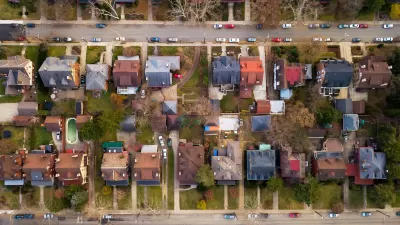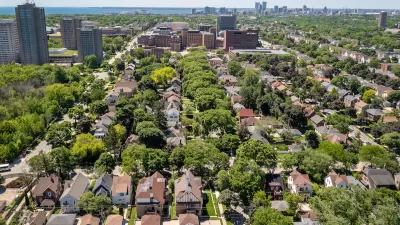The city’s active efforts to keep housing costs down through housing reforms and coordinated efforts among city agencies and developers have kept it one of the most affordable in the nation despite its rapid population growth.

In spite of San Antonio’s rapid growth, the Texas city has managed to keep rent and housing costs more affordable than other U.S. cities, writes Christoper Swope in Governing. “A Redfin Analysis found that middle-income residents in San Antonio can afford 87 percent of the homes listed for sale. Compare that to 10 percent in Las Vegas, 3 percent in Boston, and 0 percent in most of California’s big cities.”
This affordability is due in part to a Housing Policy Task Force started by Mayor Ron Nirenberg in 2017. The task force created a 10-year housing plan that aligned city resources with private-sector actors to develop affordable housing strategies. The city made zoning reforms such as permitting ADUs and offering density bonuses for affordable housing, brought a bond measure to voters that approved $150 million for housing programs, and is experimenting with community land trusts to keep housing costs down. The city also hired a ‘chief housing officer’ focused on coordinating efforts between stakeholders. “That came into play in writing new zoning rules aimed at building affordable housing around bus rapid transit lines planned to open in a few years,” Swope adds.
FULL STORY: Despite Growth, San Antonio’s Holding the Line on Rents

Trump Administration Could Effectively End Housing Voucher Program
Federal officials are eyeing major cuts to the Section 8 program that helps millions of low-income households pay rent.

Planetizen Federal Action Tracker
A weekly monitor of how Trump’s orders and actions are impacting planners and planning in America.

The 120 Year Old Tiny Home Villages That Sheltered San Francisco’s Earthquake Refugees
More than a century ago, San Francisco mobilized to house thousands of residents displaced by the 1906 earthquake. Could their strategy offer a model for the present?

HSR Reaches Key Settlement in Northern California City
The state’s high-speed rail authority reached an agreement with Millbrae, a key city on the train’s proposed route to San Francisco.

Washington State Legislature Passes Parking Reform Bill
A bill that would limit parking requirements for new developments is headed to the governor’s desk.

Missouri Law Would Ban Protections for Housing Voucher Users
A state law seeks to overturn source-of-income discrimination bans passed by several Missouri cities.
Urban Design for Planners 1: Software Tools
This six-course series explores essential urban design concepts using open source software and equips planners with the tools they need to participate fully in the urban design process.
Planning for Universal Design
Learn the tools for implementing Universal Design in planning regulations.
Ada County Highway District
Clanton & Associates, Inc.
Jessamine County Fiscal Court
Institute for Housing and Urban Development Studies (IHS)
City of Grandview
Harvard GSD Executive Education
Toledo-Lucas County Plan Commissions
Salt Lake City
NYU Wagner Graduate School of Public Service





























